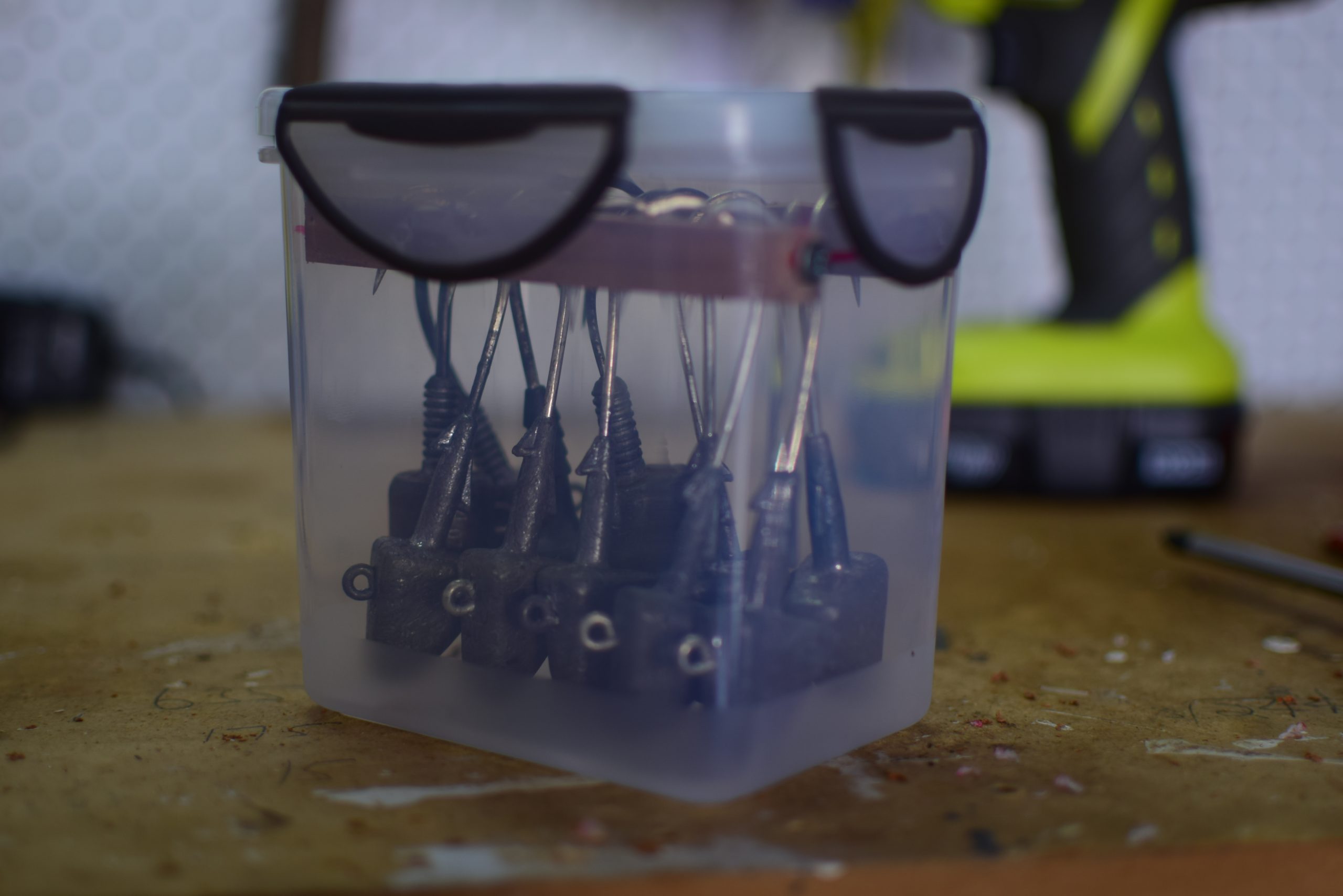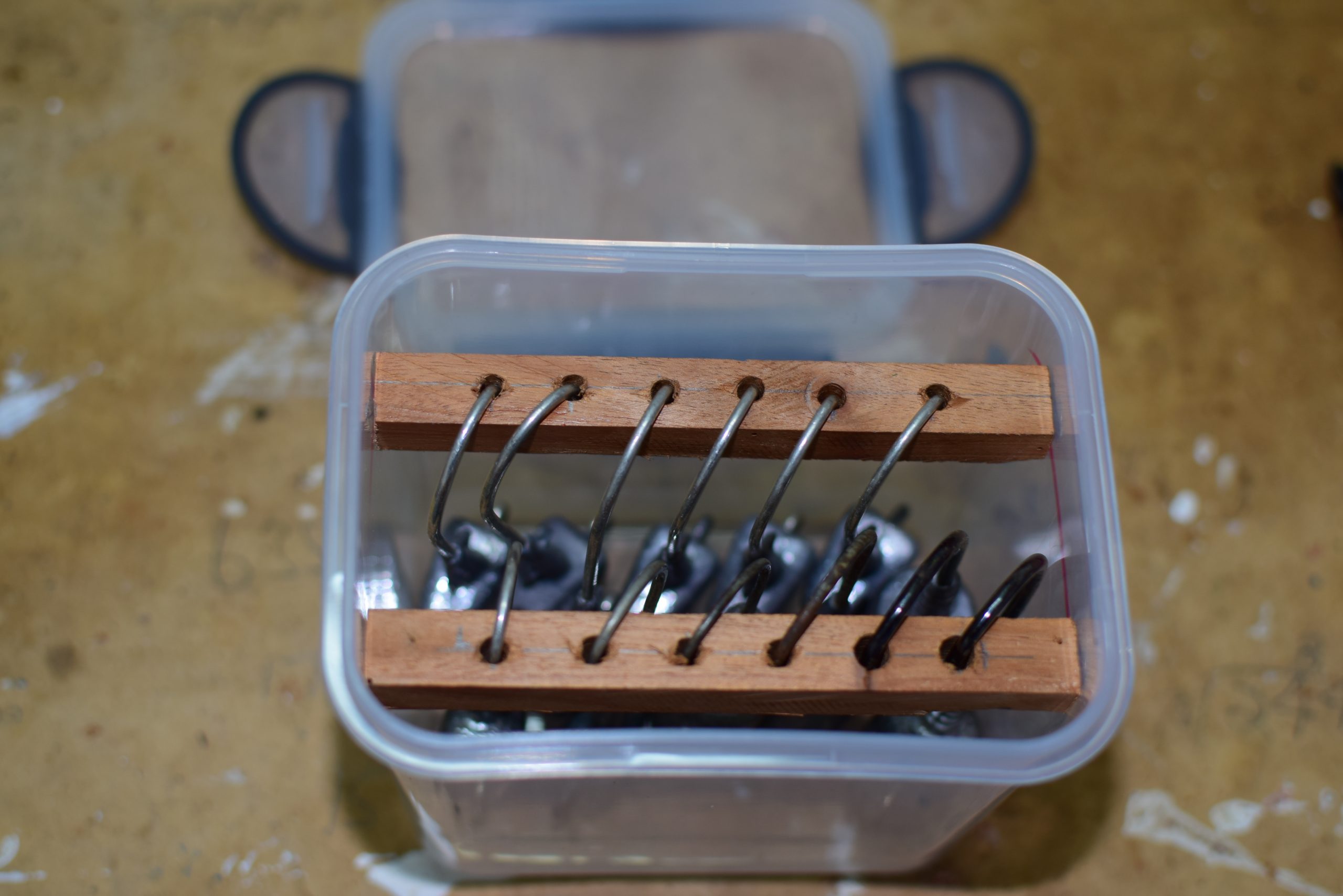Fishy DIY

Jig Head Storage Box
By Graham Brake
The day after a successful session out wide over the Christmas, New Year break saw me unpacking The Streak
in the driveway, cleaning and drying all the fishing tackle before putting everything back in its rightful place and when I say everything, I mean “everything”. It had been a particularly long day, with nearly 110 nautical miles covered over the course of fifteen hours and topped off by arriving back in the marina in the dark just as a thunder storm unleashed a downpour wetting everything that wasn’t stored in the hatches. As I lay the lure boxes out in the sun to dry, I opened the container holding the large jig heads we use in fifty plus metres of water and tried to separate them to dry before recoating in cooking oil spray (works a treat keeping the rust at bay without scaring off the fish). I don’t know what other people do, but we always seem to end up with a jumbled mess of two, three and four ounce jigs entangled together, not only making them hard to extract but also creating an environment for damaging the pointy ends that are extremely important for them to do their job. As I started repacking all the gear, I decided there must be a better way of storing the jig heads on the boat and with a week of south-easterlies forecast, now was as good a time as any to test the grey matter and see what I could think up. After playing around with a few different ideas I came up with the following design that so far has worked a treat. Not only do the jigs hang separately and are easily removed and installed, if you size the container correctly, they will not dislodge if they are upended.
Bits and pieces required:
- 1 heavy duty plastic container with a secure lid with an internal depth just slightly greater than the jig heads you want to store
- Lengths of small square hardwood, cut to fit into the plastic container – I used a 14mm x 14mm garden stake
- 2 small, stainless steel screws per length of timber
- Electric drill with a drill bit to suit the SS screws and one bit large enough to accept the jig head barbs
Assembly
Lay a couple of jig heads side by side and measure the distance between the hooks. Using this measurement as the spacing, and leaving 20mm at each end, mark out each piece of timber along the centreline. Drill each mark through the timber with the larger size bit. Using the smaller bit, drill a pilot hole in the centre of each end.
Now hang a couple of jig heads on the timber and position in the container at a height where the lid will just fit on above the top of the hooks. Mark the centres and drill through the plastic sides. After applying a dob of silicon sealant to the ends of the timber, position in the container and screw into place. Hang the jigs on the timber, clip on the lid and job done.







